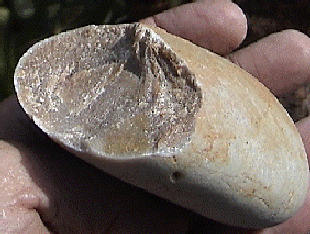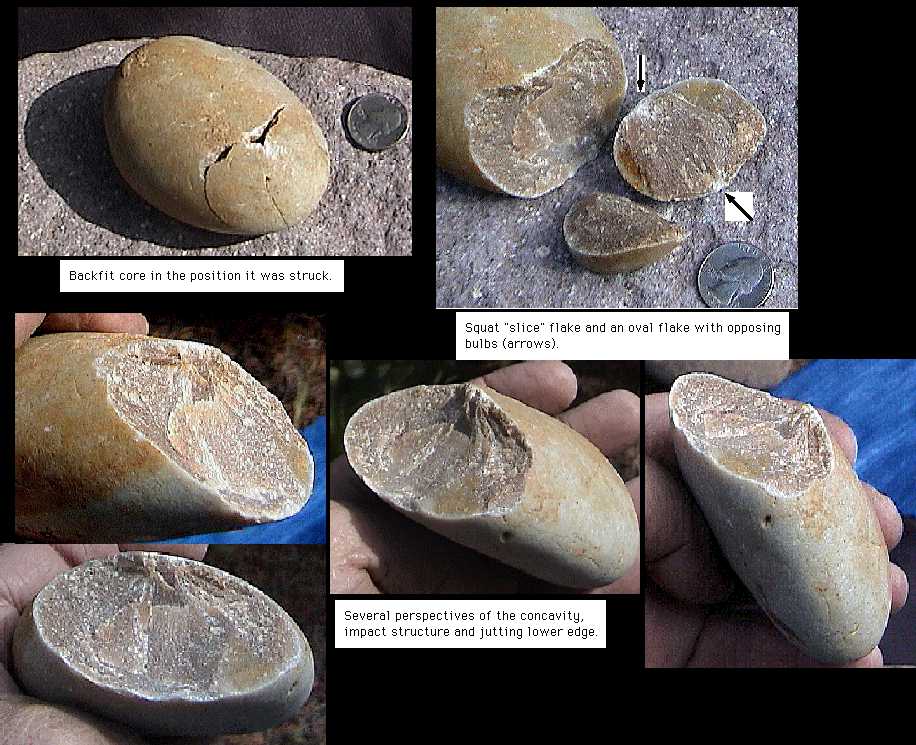
BIPOLAR UNIFACES: PROXIMAL FRACTURES

In these experiments, Richard Cerruti (San Diego Museum of Natural History) laid whole tabular pebbles flat on an anvil and hit their proximal surfaces with a heavy maul. I had never tried this before, and the processes at work are still quite vague. Fractures were instigated at both contact points as the flakes demonstrate. At this point, their inclusion as bipolar unifaces may be a mistake; they could be categorized as bipolar cores since they are whole pebbles and are not truly plano-convex in cross-section. Along with everything else in this presentation, I am open to suggestions.
Each series of photos begins with the backfit core and a view of the impact region.
 The first example
The first example
was impressive because of the deep concavity left by the flakes and the jutting distal edge.
 The second
The second
also forms a jutting lower edge, but much more slight.
 The third
The third
pebble exploded, with a distal fragment that could function as a scraper or a small scoop.
The next page illustrates several items that may be unifacial artifacts, and may have been produced in this manner. Their production falls well within what can happen in an active cobble wash, but their locations on the quiet terraces above again begs the question. Rocks fracturing in a cobble wash during a flash flood is not a secret; suspicion arises when we include in that argument the act of spitting them up and out several meters (minimum) onto the terraces above. There are also other fractured pieces on the terraces that are typical of direct percussion techniques.
Chris Hardaker
Tucson, Arizona